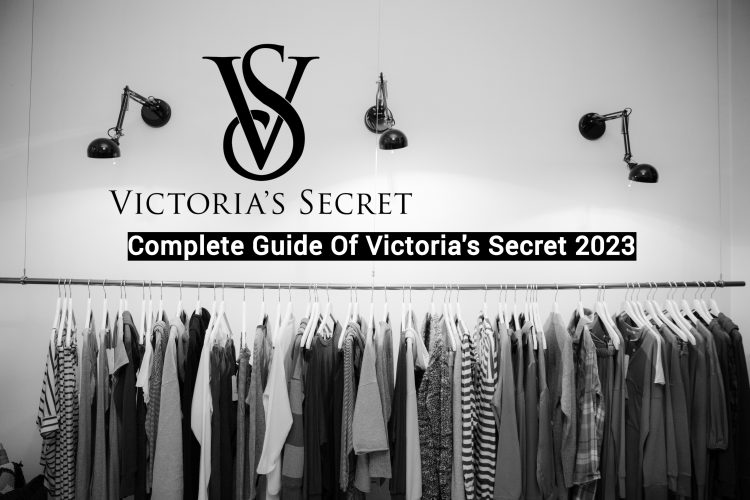Introduction:
Victoria’s Secret is an American lingerie, clothing, and beauty retailer known for its luxurious lingerie and high-profile fashion shows. The brand was founded in 1977 by Roy Raymond and his wife, Gaye Raymond, in San Francisco, California. The inspiration for the brand came from Raymond’s own personal shopping experience for lingerie, which he found to be uncomfortable and embarrassing. He wanted to create a more comfortable and welcoming environment for men to buy lingerie for their partners, and for women to shop for themselves.
The Rise and Fall of Victoria’s Secret: What Went Wrong?
Victoria’s Secret was once the biggest name in lingerie, with an estimated market share of 24% in 2018. However, the brand has faced increasing scrutiny in recent years for its lack of inclusivity and representation, as well as declining sales. This blog post could explore the reasons behind Victoria’s Secret’s fall from grace, including the rise of body positivity and changing attitudes towards traditional beauty standards.
Victoria’s Secret: A Controversial Legacy in the Fashion Industry
Victoria’s Secret has long been known for its glamorous fashion shows and provocative marketing campaigns. However, the brand has also faced criticism for its objectification of women and perpetuation of harmful beauty standards. This blog post could examine the ways in which Victoria’s Secret has shaped the fashion industry over the years, both positively and negatively.
Behind the Scenes at Victoria’s Secret Fashion Shows: Glamour vs Reality
Victoria’s Secret fashion shows have become synonymous with over-the-top glamour and high fashion. However, behind the scenes, the reality is often far from glamorous. This blog post could explore the behind-the-scenes workings of a Victoria’s Secret fashion
How Victoria’s Secret is Evolving to Stay Relevant in the Age of Body Positivity
Victoria’s Secret has long been known for its ultra-slim and conventionally attractive models. However, in recent years, the brand has faced criticism for its lack of inclusivity and diversity. As the body positivity movement gains momentum, Victoria’s Secret has had to adapt to stay relevant in the industry. The brand has made several changes to its marketing and product offerings to appeal to a wider range of consumers. For example, it has introduced more inclusive sizing options and hired more diverse models to represent the brand. Victoria’s Secret has also revamped its marketing campaigns to focus more on female empowerment and self-confidence, rather than just physical appearance. By embracing the body positivity movement, Victoria’s Secret is evolving to meet the changing demands of consumers and to stay relevant in an industry that values diversity and inclusivity.
Victoria’s Secret and the Body Image Debate: Is the Lingerie Giant Out of Touch?
Victoria’s Secret has long been synonymous with sexy lingerie and glamorous runway shows. However, in recent years, the brand has faced increasing criticism for its narrow definition of beauty and limited representation of diverse body types. Many have accused the lingerie giant of being out of touch with the current body positivity movement and failing to evolve with changing societal norms. As a result, Victoria’s Secret has faced declining sales and a loss of relevance among younger consumers. The company has attempted to address these concerns with new marketing campaigns and a shift towards more inclusive sizing options, but whether these efforts will be enough to regain the trust and loyalty of consumers remains to be seen. Ultimately, it will be up to Victoria’s Secret to adapt to the changing landscape of the fashion industry and take meaningful steps towards embracing diversity and inclusivity if it hopes to remain a relevant player in the lingerie market.
Victoria’s Secret’s Role in Shaping Beauty Standards: A Critical Look
Victoria’s Secret, one of the world’s most well-known lingerie brands, has long been a prominent player in shaping beauty standards. While the brand’s push-up bras and angel wings have made them a staple of the fashion industry, their narrow portrayal of what constitutes “sexy” has been subject to criticism in recent years. With their focus on thin, tall, and traditionally attractive models, Victoria’s Secret has been accused of perpetuating harmful beauty standards that exclude women of different body types, skin colors, and sizes. As society moves towards more inclusive beauty ideals, it is essential to critically examine the impact of brands like Victoria’s Secret in shaping our perceptions of beauty. By acknowledging the limitations of narrow beauty standards and promoting diversity, we can work towards creating a more inclusive and empowering vision of beauty for all.
The Business of Victoria’s Secret: How the Lingerie Giant Dominated the Market for Decades
Victoria’s Secret has long been considered the leading brand in the lingerie industry. Their successful business strategy has been centered around creating a unique and aspirational brand image that appeals to women of all ages. The company has managed to dominate the market for decades by focusing on quality, innovation, and customer experience. From the development of their signature push-up bra to their annual fashion show, Victoria’s Secret has always been at the forefront of the lingerie industry. Their marketing campaigns, celebrity endorsements, and partnerships with top models have also played a significant role in their success. Today, Victoria’s Secret continues to evolve and adapt to changing consumer preferences, with a renewed focus on inclusivity and sustainability. With a loyal customer base and a strong brand reputation, Victoria’s Secret is poised to continue dominating the lingerie market for years to come.































Leave Comment